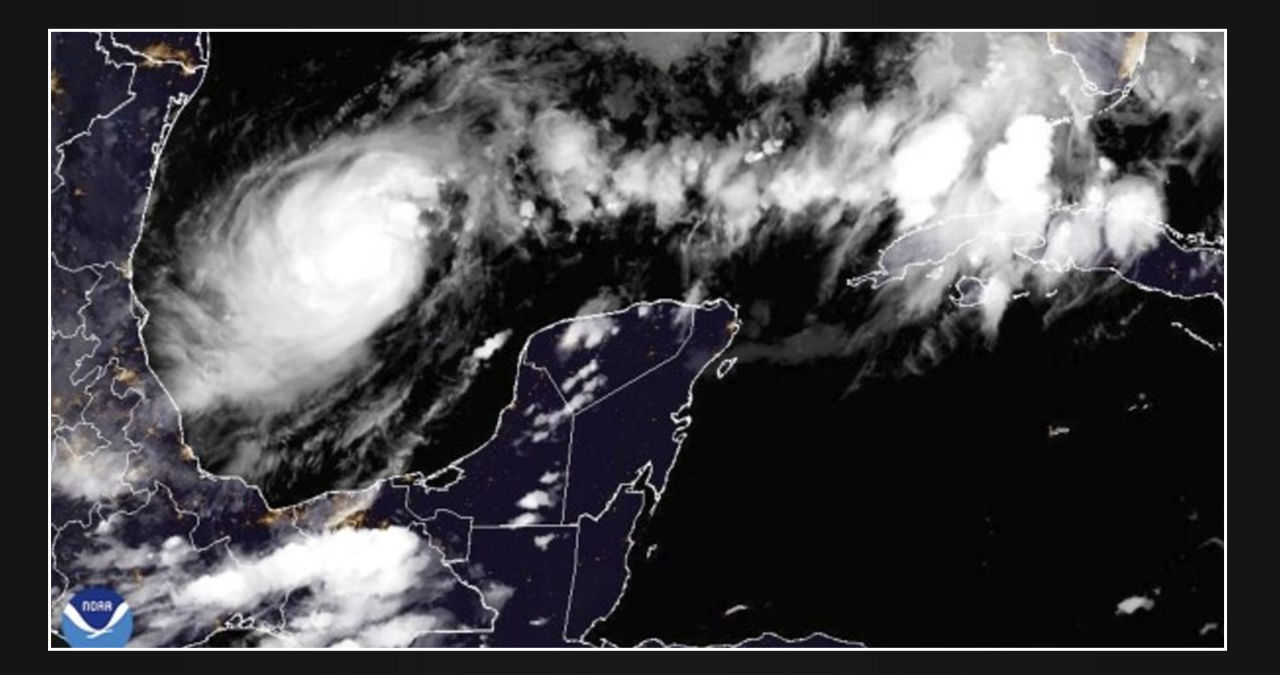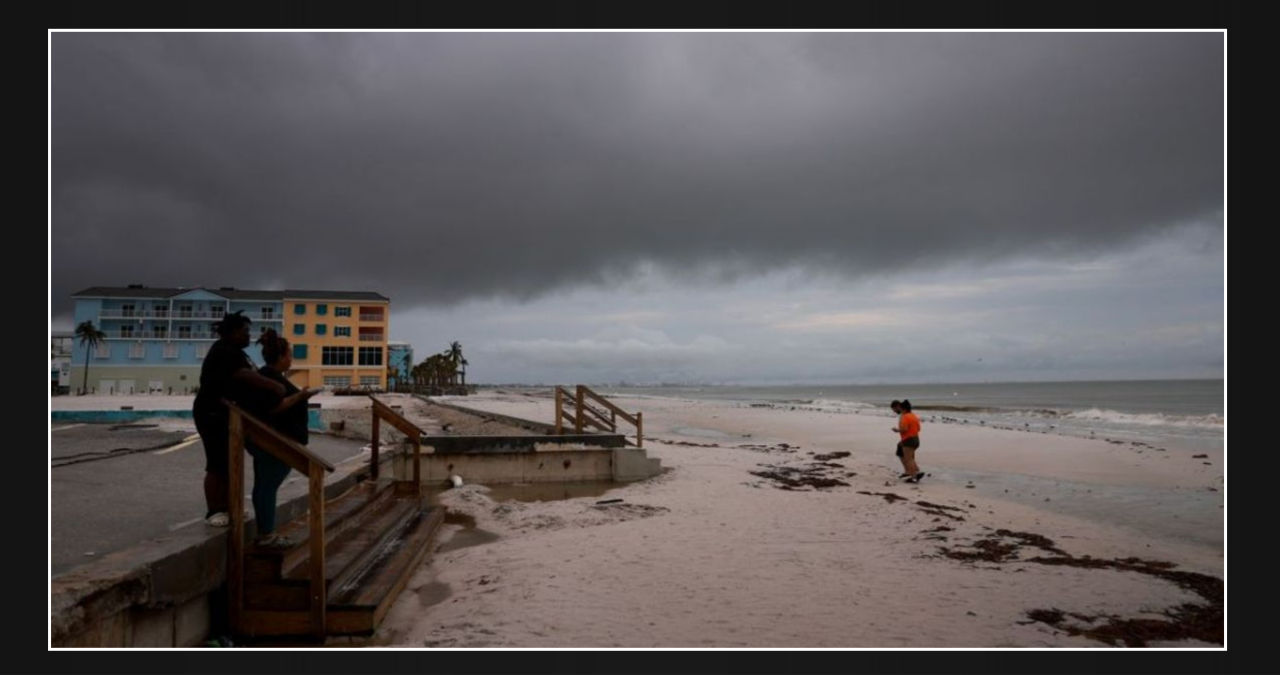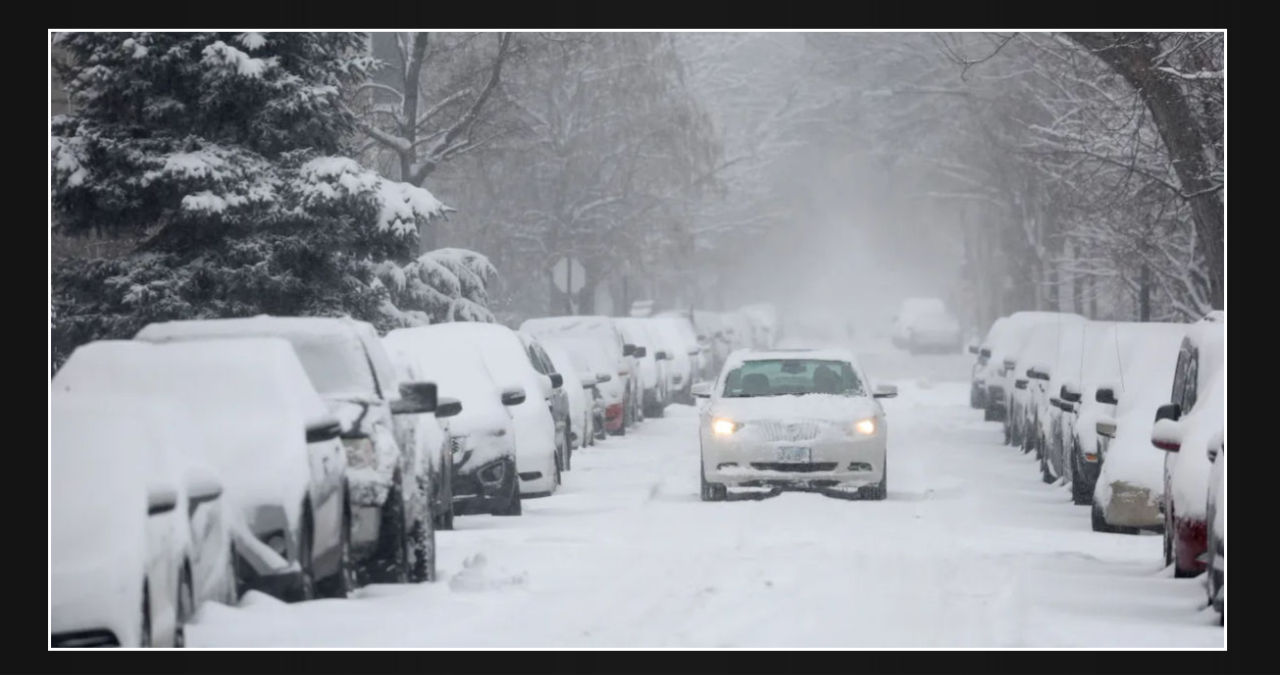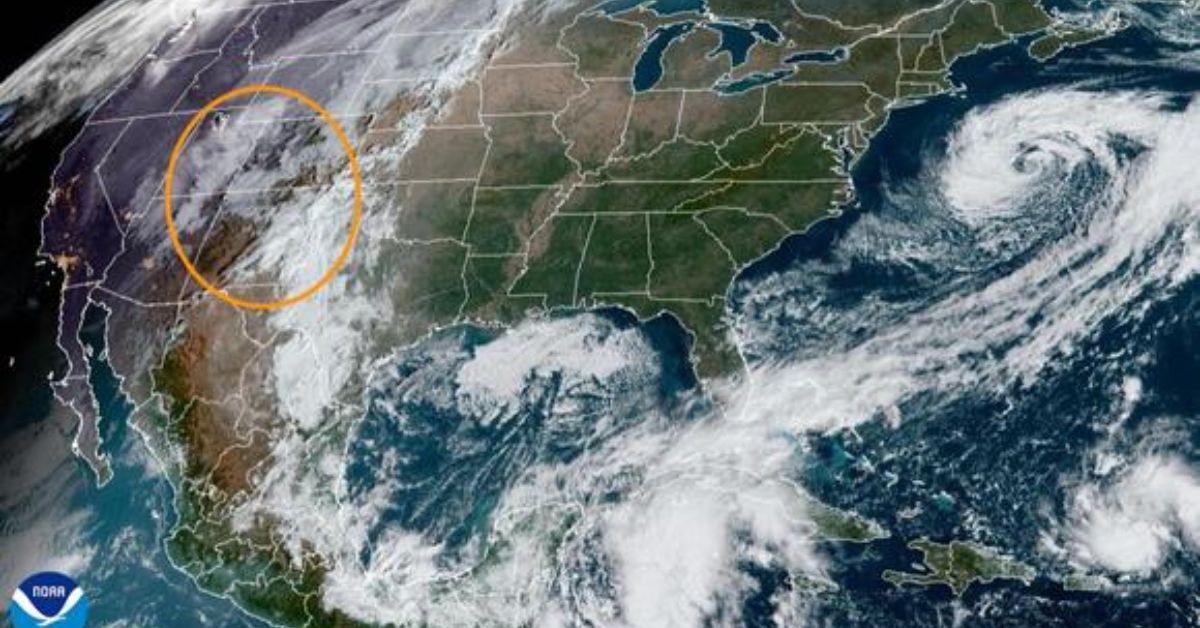Hurricane Milton has rapidly strengthened and is expected to become a powerful hurricane, targeting the Tampa Bay area. This development has put Florida on high alert and prompted evacuation orders along the coast, which is still recovering from the destruction caused by Hurricane Helene.
According to forecasters, Milton is expected to potentially make landfall in the Tampa Bay area on Wednesday and maintain its status as a hurricane as it crosses central Florida and heads towards the Atlantic Ocean. This projected path is likely to spare the southeastern states that were devastated by Hurricane Helene. The previous hurricane caused extensive damage from Florida to the Appalachian Mountains and tragically resulted in a death toll of at least 230 people, as of Sunday.
According to Florida Governor Ron DeSantis, it is evident that Florida will face significant repercussions from Milton. He emphasized that there is no possible scenario where the state will not be greatly affected by the hurricane at this stage.
Hurricane Milton, with maximum sustained winds of 80 mph (130 kmh), was positioned approximately 815 miles (1,310 kilometers) west-southwest of Tampa on Sunday afternoon, according to the National Hurricane Center.
In Pinellas County, which is home to St. Petersburg, officials have issued voluntary evacuation orders for individuals residing along the barrier island beaches and mobile home parks. It is highly likely that mandatory evacuations will be implemented in the near future.
According to hurricane scientist Phil Klotzbach from Colorado State University, the Atlantic is experiencing a rare occurrence with three hurricanes simultaneously, now that Milton has reached hurricane status. This is the first time this has happened after September, as there have previously been four simultaneous hurricanes in August and September.
The aftermath of Helene has left the St. Petersburg-Tampa Bay area grappling with significant destruction. As storm surge inundated the coast, twelve individuals tragically lost their lives. The narrow strip of barrier islands spanning 20 miles (32 kilometers) from St. Petersburg to Clearwater bore the brunt of the devastation. Efforts to clean up and rebuild are now underway to restore the affected region.
Floridians need to be prepared for an increase in power outages and potential disruptions. It is important for them to have enough food and water to last for at least a week and be ready to evacuate if necessary. Governor DeSantis emphasized the importance of being proactive in these preparations. In addition, the Federal Emergency Management Agency (FEMA) has been working closely with the governor and provided President Joe Biden with an update on the deployment of crucial resources to mitigate the impact of the situation.
Kevin Guthrie, executive director of the Florida Division of Emergency Management, stated that they are currently making extensive preparations for what is anticipated to be the most significant evacuation since Hurricane Irma in 2017.
The state has made preparations for emergency fuel sources and electric vehicle charging stations along evacuation routes. According to Guthrie, they have also identified all potential accommodations along those routes. He advises that individuals who live in homes constructed after Florida updated its codes in 2004, who do not rely on constant electricity, and who are not in evacuation zones, should consider staying off the roads.
As per Governor DeSantis, a team of 4,000 National Guard troops is currently assisting state crews in the massive task of clearing the extensive debris caused by Hurricane Helene. In order to prepare for the upcoming Hurricane Milton, the governor has requested that Florida crews, who were previously dispatched to North Carolina for the aftermath of Helene, return to the state. To facilitate the debris removal operations in advance of Milton’s arrival, the Florida Department of Emergency Management is setting up a base camp at Tropicana Field in St. Petersburg, which is the home ground of the Tampa Bay Rays baseball team.
Florida Governor Ron DeSantis declared that every possible state resource is being utilized to assist in the removal of debris. He emphasized the 24/7 effort being made to address the situation.
Air search and rescue teams discovered an additional 39 survivors who were still stranded in western North Carolina on Saturday, according to a statement from the office of state Governor Roy Cooper. The teams have been tirelessly working to rescue, evacuate, and assist those affected by the storm, with nearly 6,600 individuals already being helped, the statement added.
FEMA Administrator Deanne Criswell stood up for her agency’s response to the hurricane’s devastation, countering false claims made by Republicans and amplified by former President Donald Trump. She addressed the rampant misinformation that had spread across the affected communities.
The agency is already gearing up for Milton, according to Criswell.
According to FEMA, the federal disaster assistance for survivors has exceeded $137 million since Helene hit over a week ago. This has been one of the most significant mobilizations of personnel and resources in recent history.
According to FEMA, the White House, and the Department of Defense, over 1,500 active-duty troops, more than 6,100 National Guardsmen, and nearly 7,000 federal workers have been deployed to provide aid. They have delivered more than 14.9 million meals, 13.9 million liters of water, 157 generators, and 505,000 tarps. Additionally, they have approved over $30 million in housing and other forms of assistance for more than 27,000 households.
Over 800 individuals who have been displaced from their homes are currently being accommodated in lodging facilities offered by FEMA. Additionally, nearly 1,000 people are still being housed in 22 shelters while mobile feeding operations continue to provide assistance to those affected by the storm. The response to Hurricane Helene will remain steadfast even as Tropical Storm Milton approaches, as FEMA possesses the capability to handle multiple disasters concurrently, according to the agency.
President Biden expressed his unwavering commitment to assisting families in their recovery efforts, emphasizing that his Administration is leaving no stone unturned in providing the necessary resources. He further emphasized the importance of collaboration with both local and state leaders, irrespective of political affiliations and the duration it may take to achieve the desired outcomes.
The hurricane center has advised that the Yucatan Peninsula in Mexico, the Florida Peninsula, the Florida Keys, and the northwestern Bahamas should closely monitor the progress of the system. Heavy rainfall is anticipated on Sunday, preceding the arrival of the storm. This rainfall, along with the existing rainfall from Milton, is likely to result in flooding of waterways and streets in Florida. Forecasters have predicted that some areas could receive up to a foot (30 centimeters) of rain by Wednesday night.
In the open Atlantic, Hurricane Kirk weakened to a Category 2 hurricane on Sunday. It had peak winds of 105 mph (165 kph). As a result, Bermuda and the northward areas along the U.S. and Canadian coasts experienced large swells and dangerous surf and rip current conditions. At the same time, Hurricane Leslie was located over the Atlantic Ocean, far away from any land. It had maximum winds of 85 mph (140 kph).






